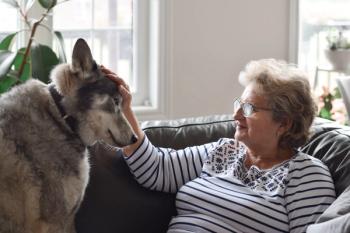
When veterinary clients spend the mostand the least
Does every veterinary practice in the country get crushed by a revenue drop in the winter months? We set out to prove what every wise veterinarian seems to know.
When do clients spend more and less? Veterinarians all think they know, but the AVMA Veterinary Economics division in this article checks the numbers. (Photo Getty Images)During my time as an agricultural economics student at the University of Kentucky, I was lucky enough to head the marketing efforts of a feline-specific veterinary clinic in Lexington, Kentucky. I had the sometimes difficult task of identifying busy times: What time of day did we see a rush? What day of the week did we need extra staff? And, my personal favorite, what times of year could we expect to see the highest-and lowest-revenue? By the end of my seven-year experience at that practice, I felt confident in my answers: daily rush at 5 p.m., extra staff on Fridays, high revenue in the summer, low revenue in the winter.
Revenue bumps and lulls
As I began my internship at the American Veterinary Medical Association (AVMA) Veterinary Economics Division, I wondered whether the same patterns I'd seen in Lexington happened everywhere. To help answer this question, we collected data from the Bureau of Labor Statistics' Consumer Expenditure Survey for the years 2005 through 2014. This survey collects information on the spending habits of U.S. consumers and separates the data into categories of frequently purchased items, including veterinary services. We aggregated the monthly spending observations to form a quarterly time series. The quarterly expenditures on veterinary services for a specific sample size of American consumers are illustrated in Figure 1.
Figure 1
Why measure seasonality?
Seasonality is a characteristic of time series data where regular and predictable changes recur at specific intervals throughout the year. Any predictable change or pattern like that over a one-year period can be said to be seasonal.
To estimate the effect of seasonality, we use a statistical procedure that lets us capture the impact of first, second and third quarters on the number of veterinary visits and total expenditures. The results show that, compared to the fourth quarter, veterinary expenditures are historically higher in the first, second and third quarters by 50.8 percent, 54.5 percent and 34.5 percent, respectively. That means 27.9 percent of revenue in veterinary practices comes from the first quarter, 28.6 percent from the second, 24.9 percent from the third, and only 18.5 percent from the fourth.
Figure 2Understanding seasonal spending patterns in our veterinary services industry allows practice owners and managers to separate the signal (seasonal pattern) from the noise (weekly or monthly expenditures). Once you control for the effects of seasonality, another valuable piece of information emerges. Overall spending on veterinary services for a specific sample size has decreased between 2005 and 2014. Yes, the BLS found that prices of veterinary services have been steadily increasing over this period, but the amount spent at veterinary service providers is declining for the constant sample (population) size studied in the survey.
The number of visits by this constant sample size is also declining at 2.6 percent per year over this period. The ratio of these two variables, the average expenditure per veterinary visit, is noticeably increasing. This indicates that either the constant sample size has a declining number of pets or that pet owners are taking their pets to veterinary service providers less often, a trend that has been occurring for the past 20 years, according to the AVMA's published research. And those who do take their pet to veterinarians are spending more money at each visit. The consumer expenditure data in its current form cannot tell us why this is occurring, just that it is. But simply knowing the spending patterns of consumers can be a valuable tool for practice owners and managers.
Why should you care?
If you've been practicing medicine for a while, this analysis likely only confirmed what you already know: Veterinary business is slowest in the winter. However, this analysis quantifies that effect and shows what the national average looks like.
The question is, how can you use this information? Here's how: You can more confidently predict your clinic's busy and slow seasons to make better business decisions. For instance, if you or members of your staff want to take an extended amount of time off, or if you're planning a clinic remodel, it's best to schedule that in the fourth quarter. Or you could take a more aggressive approach to seasonality by offering promotions in the winter months to bring in more clients and try to smooth out the seasonal effects. You're also more likely to experience cash flow problems in the winter-save a cash reserve during those busier months!
Making these types of decisions using your practice's business seasonality as a guide can help make smart business decisions for your practice, a vital factor in a competitive market.
Sean Barker is an intern for the AVMA's Veterinary Economics Division. Dr. Ross Knippenberg is assistant director of economics at the AVMA.
Newsletter
From exam room tips to practice management insights, get trusted veterinary news delivered straight to your inbox—subscribe to dvm360.




